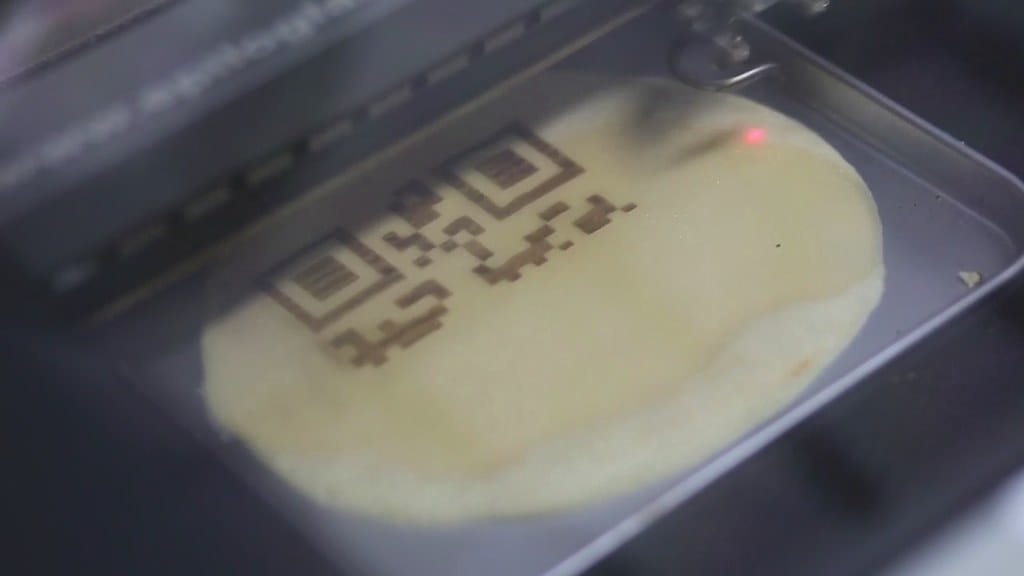Scientists Create World's First Edible Lasers That Could Transform Food Safety and Medicine
In a breakthrough that sounds like science fiction, researchers have successfully developed the world's first edible lasers using everyday food ingredients. These microscopic marvels, created from proteins found in egg whites and constructed on edible substrates, represent a revolutionary leap in biocompatible technology that could transform everything from food safety monitoring to internal medical diagnostics.
The Sweet Science Behind Edible Lasers
The groundbreaking research, led by scientists at the Wellman Center for Photomedicine at Massachusetts General Hospital, demonstrates how common food proteins can be engineered into functioning laser devices. The team utilized albumin—the same protein that makes egg whites foam—as their laser medium, creating devices small enough to be completely consumed without harm.
Unlike traditional lasers that require toxic materials and complex manufacturing processes, these edible variants use biocompatible materials that the human body can safely process. The lasers are constructed on substrates made from cellulose or other food-grade materials, ensuring every component meets strict safety standards for human consumption.
Real-World Applications That Matter
Medical Diagnostics Revolution
The most promising application lies in internal medical monitoring. Traditional medical imaging often requires invasive procedures or external equipment that provides limited internal visibility. Edible lasers could be incorporated into pills or food products, allowing doctors to monitor digestive health, detect inflammation, or track medication absorption in real-time from inside the body.
Dr. Seok Hyun Yun, the lead researcher, explains that these devices could potentially identify cancerous tissues or monitor wound healing in previously inaccessible areas of the body. The laser's light signature changes when it encounters different biological conditions, providing valuable diagnostic information.
Food Safety Monitoring
The food industry faces constant challenges in ensuring product safety throughout the supply chain. Edible lasers embedded in food packaging or products could detect bacterial contamination, temperature abuse, or chemical exposure. Unlike current monitoring systems that require external sensors, these devices travel with the food itself, providing continuous monitoring from production to consumption.
Technical Breakthrough and Safety Considerations
The engineering challenge of creating edible lasers required researchers to overcome significant technical hurdles. Traditional lasers rely on materials that would be toxic if ingested, requiring a complete reimagining of laser construction principles.
The team achieved optical gain—the fundamental requirement for laser operation—by carefully structuring protein molecules to amplify light. The resulting devices produce coherent light beams while maintaining complete biocompatibility. Testing has shown these lasers can function effectively in simulated digestive environments, maintaining their optical properties even when exposed to stomach acid and digestive enzymes.
Safety protocols ensure these devices pose no risk to human health. The power output remains well below levels that could cause tissue damage, and all materials naturally decompose in the digestive system within hours of consumption.
Industry Impact and Future Possibilities
The pharmaceutical industry has already expressed significant interest in this technology. Companies are exploring integration into smart pills that could provide real-time feedback on medication effectiveness or track drug delivery to specific organs. This could revolutionize personalized medicine by providing unprecedented insights into how individual patients respond to treatments.
Food manufacturers see potential for next-generation quality control systems. Imagine products that can alert consumers to spoilage or contamination before it becomes dangerous, or supply chains that automatically track product integrity from farm to table.
Looking Forward: The Next Phase
While current prototypes demonstrate proof of concept, researchers are working toward commercial applications. The next phase involves scaling production, reducing costs, and obtaining regulatory approval for human use. The team estimates that consumer applications could emerge within the next five to seven years, pending successful clinical trials and FDA approval.
The technology also opens doors for applications beyond medicine and food safety. Researchers are exploring uses in environmental monitoring, where edible sensors could track pollution in water supplies or detect contamination in agricultural products.
The Bottom Line
Edible lasers represent more than just a fascinating scientific achievement—they embody the future of biocompatible technology. By proving that sophisticated optical devices can be created from everyday food ingredients, researchers have opened an entirely new field of possibilities for internal monitoring, food safety, and medical diagnostics.
As this technology moves from laboratory to market, it promises to deliver unprecedented capabilities for health monitoring and food safety while maintaining the safety standards consumers demand. The intersection of photonics and nutrition has never been more promising.
